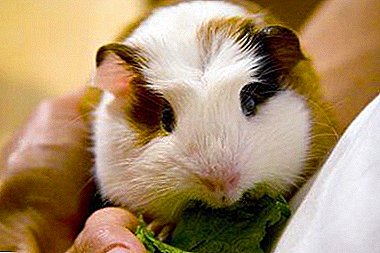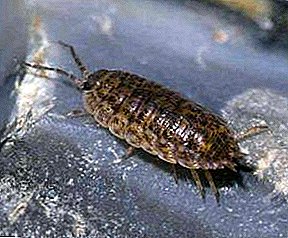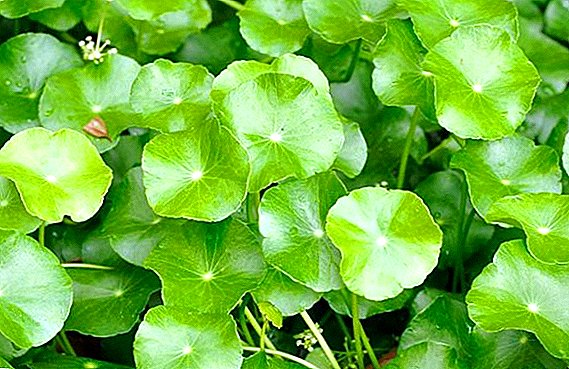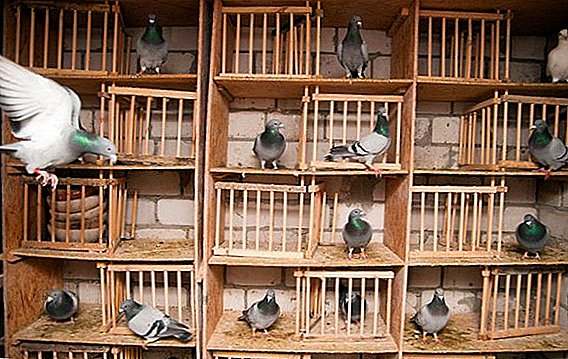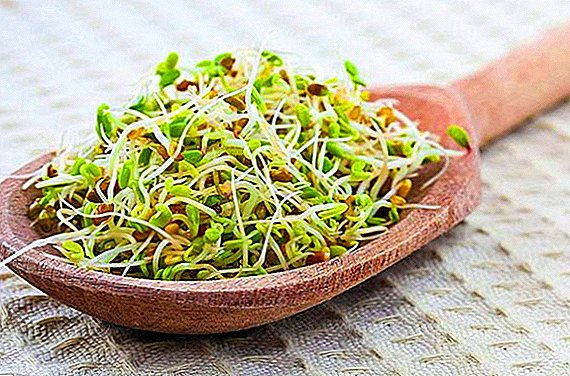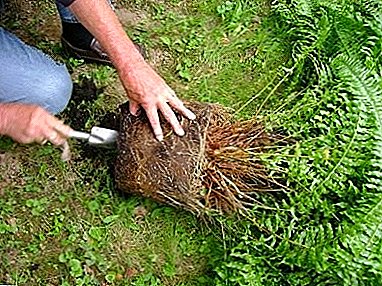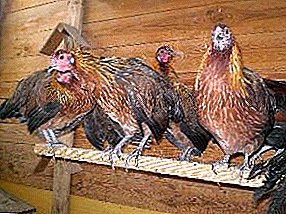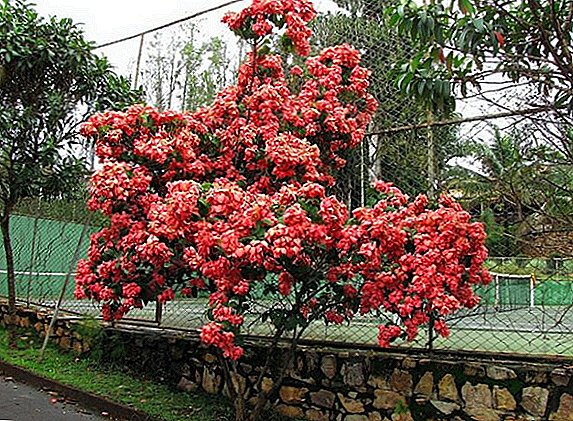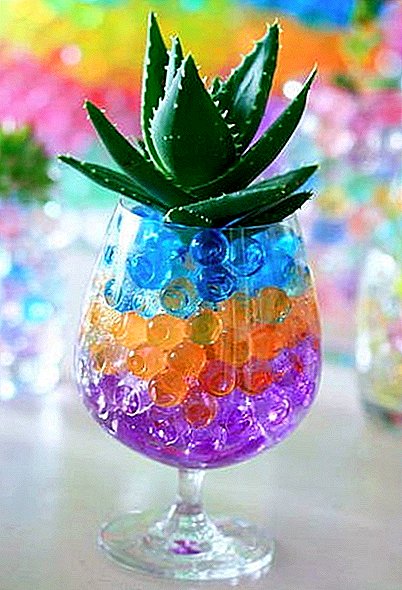 Fans of home flowers know what painstaking care requires such a hobby. Many of us, leaving for rest, left the keys to the apartment to friends or neighbors so that they would water the flowers during our absence. However, science does not stand still, and akvagrunt has been used for quite a long time and widely in the practice of home gardeners. We learn what is this substance and what is its benefit and convenience.
Fans of home flowers know what painstaking care requires such a hobby. Many of us, leaving for rest, left the keys to the apartment to friends or neighbors so that they would water the flowers during our absence. However, science does not stand still, and akvagrunt has been used for quite a long time and widely in the practice of home gardeners. We learn what is this substance and what is its benefit and convenience.
What is an akvagrunt
Aquagrunt is a substance capable of absorbing and holding a large amount of liquid for a long time. This is a polymeric material in the form of colored or transparent beads, which, absorbing moisture, increase in size and, if necessary, give this moisture to the roots.
Aquaria for flowers and hydrogel: is there a difference
Not only in floriculture, but also in plant growing, such a direction as hydroponics has been intensively developing for several years. This cultivation of plants without soil thanks to special nutrient solutions. It is this direction that made the so-called hydrogel popular.
We recommend that you read about what hydroponics is, as well as how to grow greens, cucumbers, tomatoes and strawberries in hydroponics.

Did you know? It turns out that hydroponics is not a new phenomenon. In ancient India, the cultivation of plants in a coconut fiber substrate was practiced, and the roots were in the water, from which they obtained nutrients.
It represents small granules, like those that we each saw in boxes with new shoes. This substance is a substitute for drip irrigation. The hydrogel is mixed with water, absorbing it into itself, and then used when planting the culture in the ground, as an enveloping, additionally nourishing moisture substance.
Aquagrunt is considered a type of hydrogel and differs only in appearance. These are colored balls, which are usually used for decorative purposes when breeding potted flowers in vases or transparent flower pots.
How to use akvagrunt colors: instructions
Decorative hydrogel is a transparent balls of various bright colors in the package. 
Ball preparation
First you need to do a few steps:
- pour the balls out of the packaging into a container prepared in advance, pour 500 ml of water over them. Water for plants is better to take tap, allowing it to stand for 2 days before using;
- leave the hydrogel in the tank for a day, then drain the rest of the water, which is not absorbed. In this form, the tool is ready for use.
Aquagrunt is also used as a filler for florarium.
Planting a plant
Now the main actions:
- Ready balls of akvagrunta are placed in a vase or other capacity where the plant is planned to be planted;
- the plant is removed from the soil, carefully and thoroughly washed the roots from the remnants of the substrate, then put it in a vase with hydrogel, immersing the root in it. If the flower has a high stem, it is recommended to pour half of akvagrunta to the bottom of the vase, then place the root of the flower and cover the rest of the balls from above, which will ensure greater stability of the flower.
Important! Balls can be dangerous for small children and animals, so try to place the vessels with akvagruntom in inaccessible places.
Is there any benefit: for what purpose the substance is suitable
Disputes on the usefulness of akvagrunta not stop. Manufacturers claim that it is possible to fully grow plants in it, and experienced growers are confident that this is just a design tool.
We study the composition of akvagrunta
Akvagrunt made on the basis of the hydrogel, which is a polymer, and, accordingly, does not have in its composition any useful substances and trace elements needed by the plant. The function of the composition is solely in the absorption of fluid and the gradual release of its roots.
In other words, your flowers can receive a nutrient medium only from the water that the colorful balls have absorbed in themselves, and they, in turn, bring mostly decorative benefits. 
Plant surface
Manufacturers claim that growing plants in hydrogel balls is not only possible, but also very simple:
- Many growers use this technological achievement for rooting cuttings. To do this, aquagrunt is prepared in the traditional way, according to the instructions on the package, then cuttings are simply inserted into the vessel with the substrate, which must be rooted. Compared with the classical placement of cuttings in a glass of water, this method has a definite plus: the cutting receives moderately moisture and does not rot.
Houseplants such as orchid, crossander, kalanchoe, sheflera, campanula, pachistachis, ficus, dracaena, azalea, petunia, streptocarpus, hypoestes, dieffenbachia, argirantemum and royal geranium propagate by cuttings.
- Some home-flower lovers practice hydroponic flower cultivation without the use of soil substrates, exclusively in hydrogel. This process requires a thorough assessment of the condition of the plants and does not always give the desired result. However, when breeding flowers that grow in nature according to the principle of hydroponics, for example, orchids, aquagrunt is quite well used. In this case, the plant does not immerse completely in the balls and is in a pot with the usual substrate of bark, and the pot, in turn, is placed in a vessel with prepared aquaground. This reduces the risk of rotting of the root system of the flower and the required moistening of the substrate is achieved.

Akvagrunt for flowers in bouquets
Aqua ground is ideal for cut flowers in a bouquet. Very nice looks fresh bouquet of flowers in a vase filled with multi-colored transparent balls.
We advise you to read about how to keep roses, peonies, tulips and lilacs in a vase longer.
Even capricious bouquets of roses or tulips will be better preserved in such a mixture, since they will receive a sufficient amount of moisture and at the same time their cut will not rot.
Important! When placing bouquets in aquagrunt it must be remembered that the substrate should be thoroughly washed every 2 days under running water, just like the flower stems themselves. This is necessary in order to remove the resulting organic mucus and avoid the appearance of an unpleasant odor in the vase.

How to care for plants
If you decide to experiment with growing flowers in hydrogel balls, you should familiarize yourself with the basic rules of this process:
- Properly prepared akvagrunt suitable for the plant as long as it retains moisture. As the balls dry out, a small amount of water should be poured into the vase. If you notice that only the top layer of balls dries out, then it is enough to periodically spray it without pouring water on the bottom layers. If the layer is very dry, remove it and soak for 12 hours in aged water. The general watering of a plant is carried out, as a rule, once a month. The rest of the water, which is not absorbed into the substrate, must be poured.
- If it is necessary to reduce moisture loss, the top of the vase is tightened with plastic wrap.
- The root system of the flower should be well washed, there should be no traces of soil on it. You need to immerse the roots in balls. For the first time, it is better to try planting cuttings into the soil, and flowers with a complex root system, which is easy to damage, should be left in the soil substrate.
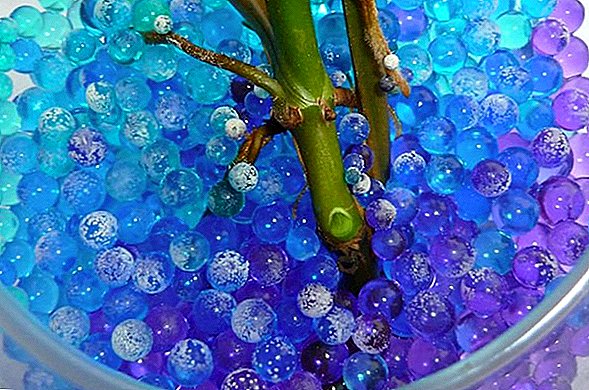
- It is impossible to flood the substrate with the flower in it completely. This can lead to disruption of root aeration and death of the plant.
- It is recommended to tie flowers with a high stem when planted in aquagrunt to avoid unnecessary load.
- Only moisture-loving cultures are allowed to be planted in the balls, as well as plants that tolerate shade well, since the hydrogel should not be left in direct sunlight.
- When growing flowers in aquagrunt, it is recommended to water the granules with a solution of mineral fertilizers once a month to feed the plant. At the same time the rest of the water must be drained.
- The service life of one portion of the substance is 6 months, after which it is recommended to move the plant to a new substrate, and even better to the soil mixture.
Akvagrunt or ordinary soil: the pros and cons
Contrary to the assurances of manufacturers of the mixture, battles on the choice of the type of substrate for home flowers are continuing. Let us try to determine what are the positive and negative sides of the aqua-ground and whether it is able to withstand ordinary soil. 
Aquagrunt difficult to underestimate:
- the mixture has a bright color and refreshes the interior of the room;
- plants in this soil look unusual and fresh;
- balls in a dry form take up very little space and are easily transported and stored;
- replant plants that are in this composition, easily and without excess dirt;
- if you need to leave, and watering flowers to no one, aquagrunt perfectly cope with the task of preserving moisture.
However, the disadvantages of this composition are very significant:
- aquagrunt is an artificial mixture, and there are no useful substances in its composition. Accordingly, the plant cannot fully develop in it without additional fertilizer;
- hydrogel can be used only in vessels with good ventilation, so as not to disturb the aeration of the roots;
- with prolonged exposure to the sun composition may be covered with green bloom;
- the liquid from the top layer of balls evaporates very quickly, which requires constant attention and regular spraying.

Soil substrates also have both pros and cons. Here are the benefits:
- now there is a huge amount of soil mixtures, in which the composition is already properly balanced;
- properly planted culture will be easier to develop the root system inside the porous soil;
- the composition of the substrate provides the flowers with essential nutrients and does not require constant feeding;
- does not require frequent replacement.
Cons, of course, are present:
- plant transplantation is a rather dirty and time consuming job;
- soil that has not been properly treated and disinfected may contain bacteria and fungi that are dangerous to plants;
- the drying up of a coma of earth occurs rather quickly. Accordingly, the flowers growing in the soil require frequent watering.

Did you know? Hydrogel properties are used not only in floriculture. Scientists from Duke University invented a combined hydrogel that mimics human cartilage tissue. This discovery may be a new word in the treatment and rehabilitation of people with joint diseases.So, we got acquainted with the substance called akvagrunt, learned about its properties and scope. From the foregoing, we can conclude that the composition is an excellent design solution and an emergency means for preserving the mode of watering the plant. However, hydrogel balls cannot completely replace the soil.



